|
|
 |
 |
| |
December 2014 |
|
After seven glorious years of service, David Wignall Associates has outgrown its name and is evolving into the Seaport brand. David Wignall Associates has completed the cycle of preparing New Priok in Jakarta and now is the time we move fully to our new
image. Seaport Consultants Asia and its siblings in the Europe, Canada and the US will now be supplying port advisory services worldwide.
Covered in this newsletter are projects in port privatization,
ships agents moving into port operations, environmentally unfriendly ships and coal terminals. The next issue will cover Africa and South America. So wishing you a blessed
Christmas and looking forward to a prosperous New Year.
Welcome to the new image!
|

|
|
Privatization, Unions and the Creation of Commercial and Economic Value
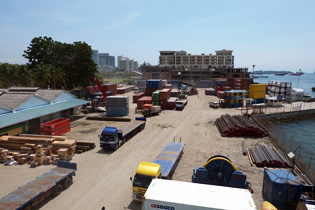
I have recently been witness to the power of words; we shall not mention the P word I was told in setup meetings related to a privatisation scheme. We
can concession and lease, joint venture and partner but never privatise. So, privatisation is a dirty word in many people's views. This is not strange
given that privatisation represents the movement of activity from control by a quasi-governmental organisation with deep long-term relationships with
individuals and organisations operated for the benefit of those individuals and organisations to (usually) a private company operated for the benefit
of infrastructure users and the public interest. The movement from one to the other is accompanied by the delivery of cash (and/or the provision of
capital for expansion) to the Government. The same functions still need to be undertaken, in ports the same or more cargo needs to be lifted on and
off ships or stored. So, the movement is also accompanied, usually in ports at least, by an improvement in productivity and the value added by the
asset to the economy for the benefit of everybody.
So, why is it important not to mention the P word? Perhaps the misperception of the interest of the workers, as represented by a union or unions in their
didactic mode of being the one true representative of everyone. Most union's see privatisation as being disruptive and therefore bad. The fact that
it usually leaves most port workers better off and in safer working conditions is ignored. It is the risk or challenge of change the union and others
resist. Change is always threatening, even when it is change for the better; ask most expectant fathers.
Putting on hold consideration of the impact on society and vested interests, a number of privatisations fail or suffer appropriate criticism because the
reassignment of value is inappropriate or the cash released to the government is wrong; too much or too little. In our sector the comments of the Australian
Competition Commission that the prices paid by the private sector for long term leases for ports such as Port Botany must lead to additional costs
within the economy, chime in harmony with the sectors own view of the very high valuations achieved in the sale process.
It is vital before reassigning the rights, responsibilities and potential value of a port to ensure that you truly understand that value and how it impacts
all stakeholders including the broader economy. Understanding for example the value that can be created by improving productivity or re-distributing
the risks being taken by the stakeholders or re-organising how land and equipment are used. Who can deliver that value, who can point to precedence
that they can deliver that value and your view on who deserves to be awarded that value are judgements. Such judgements are the role of government.
The private sector can decide to buy or not to buy...
Maximizing the asset value by identifying the potential and marketing it to the right people is critical in the P word process. Understanding the drivers
of organisations as they view the potential asset and seeking to extract that value for the Government are an important element of this. In recent
years we have seen pension funds seeking steady cash delivering assets provide a very different view on their value than port operators. Who else may
see more value than the existing management in giving a strategic position in a country, the need for a significant deal, buying real capability
to apply to other opportunities! The art of the P word is to understand where and who may perceive that value and deliver something special to government
or for that matter anyone selling a port. Something I hope we provide to our clients!
|
Ships Agents are the Port Operators of the Future!
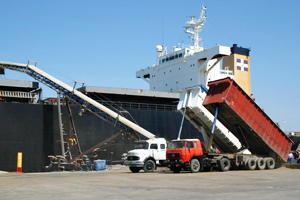 More and more we are seeing companies diversifying their business models. The major container operator APMT is rumoured to be seeking bulk and general cargo investments, large commodity traders have bought or built petroleum product and other commodity storage assets and now ship agents are setting up their own port operations. This last item is evidenced by a deal recently done in Southern Thailand for a modest bulk and general cargo handling facility. Here a marine services provider has gone into terminal operations. I suppose the real question is why we do not see more of this. Ships agents have from the year dot arranged for cargo to be loaded and unloaded from ships. In one recent privatisation we were involved with it became apparent that the ships agents had driven port reform and in the background managed the port for decades; drive by a need to get their ships unloaded. So is the move from agent to operator not that great? We shall see, holding real assets, ensuring skilled operators are trained and equipment maintained may prove to be rather a different challenge from completing paperwork and ringing the right people to oil the wheels of trade. It is all rather strange to me when twenty five years ago the port I was a manager of went into the agency business to expand its ability to earn revenue and control its own operations effectively... More and more we are seeing companies diversifying their business models. The major container operator APMT is rumoured to be seeking bulk and general cargo investments, large commodity traders have bought or built petroleum product and other commodity storage assets and now ship agents are setting up their own port operations. This last item is evidenced by a deal recently done in Southern Thailand for a modest bulk and general cargo handling facility. Here a marine services provider has gone into terminal operations. I suppose the real question is why we do not see more of this. Ships agents have from the year dot arranged for cargo to be loaded and unloaded from ships. In one recent privatisation we were involved with it became apparent that the ships agents had driven port reform and in the background managed the port for decades; drive by a need to get their ships unloaded. So is the move from agent to operator not that great? We shall see, holding real assets, ensuring skilled operators are trained and equipment maintained may prove to be rather a different challenge from completing paperwork and ringing the right people to oil the wheels of trade. It is all rather strange to me when twenty five years ago the port I was a manager of went into the agency business to expand its ability to earn revenue and control its own operations effectively...
|
Fuel efficient ships, economy and environmental insanity, through life environmental impact
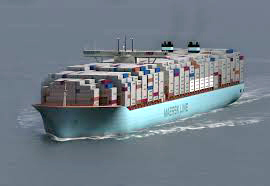
The number of orders for container ships over the last few years has been frightening. For those of us who believe in managing cash very tightly it has
been alarming to witness more and more orders being placed when the balance sheets of many of those ordering are already in some distress and it is
clear the market is already in oversupply. I hear my shipping company friends defend these orders but I thought a little rant was appropriate, even
if it is perhaps 12 months later than it should have appeared.
The rationale behind the orders we have seen has elements of: remaining relevant and competitive, reducing the mean cost per TEU carried and (that wonderful
catchall phrase) being environmentally friendly. In isolation all of these work and provide stories to convince Boards of Directors, investors and
banks to sign orders, commit funds and give credit approvals. However, viewed in the round for the whole industry, applying holistic thinking, you
have to wonder if the world has gone even more insane than the usual insane peaks and troughs of the ship ordering cycle.
A standard cargo ship should last between twenty and thirty years; investment cases will be based on fifteen to twenty years. Taking the last excuse for
ships orders first, environmentally friendly, the ships are being ordered because they are more fuel efficient and therefore more environmentally
friendly, they replace ships which are at present maybe five to eight years old but on someone else's balance sheet (hopefully) and well short of their
useful life. The environmental damage caused by ship building and ship breaking greatly reduces the overall benefit of investing in new ships before
the end of their useful life. In fact it is hard to see how in a holistic way the ships being ordered will overall have a positive impact on our environment.
The through life logic also applies to the investment case (and hence impacts lending). The new ships are destroying the value of other ships, hence my comment about hoping they are on someone else's balance sheet. Estimates of when the supply demand
balance will favour the ships owners have in recent years always moved into the future. As they recede into the future they reduce the prospect of
improving container transport rates, lengthen investment return periods and raise the spectre of defaults and bankruptcies. So in this respect ordering
new ships would really seem to be the last thing to do; the CEO of Maersk is on record as saying perhaps they shall not be making new orders anytime
soon. However that is something of an illusion; their orders have been ahead of the market and a few months later Maersk were reported as negotiating
for some new ships! Despite this apparently difficult climate, company after company have committed to new orders for mega-ships and more fuel efficient
ships (read less expensive to operate) so that their fleet remains competitive. If we follow their logic we have to have an efficient fleet to compete.
In ordering more ships we reduce the ability of everyone to maintain profitable container transport rates. In this mess of a paragraph do we see the
insanity yet?
To finish off the train of thought outlined above, let us assume that some of those companies placing orders eventually do go bankrupt and we have a lot
of 5 to 8 year old ships on the market at presumably rock bottom prices. How hard would it be to create a plan at some point to provide low cost container
services similar to the low cost airlines and take a significant chunk of container lines' market share and make good money? That idea is one of many
we have heard of or maintain in our bag of tricks, to use low cost container ships from bankruptcies or acquired from shipping companies in difficulties.
Most of the plans seen have the effect of making the existing players' bottom lines even more difficult to manage. A final aside before finishing the
rant, trends in ship finance where we have seen hedge funds and junk bonds providing finance into the sector. These forms of finance are meant to be
high risk; we have to admit that seems reasonable! However they also are meant to be high return, when did that happen consistently in the shipping
sector? Excepting those cruise ships...
|
Cruise industry questions?
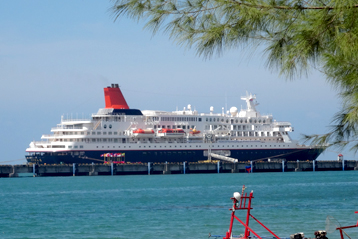
This year our end of year exam should be for the cruise sector. It is leaving the year with more questions from our work in the sector
than ever before.
This year I have seen two partially completed passenger terminals funded by the EU and been left wondering
how they got that funding approved. Normally when I try and press a case for a new terminal in a market that has shrunk year on year
for ten years the project doesn't get funding (and I get strange looks and questions about my judgement). However one of those terminals
managed to secure funding with a business plan that said just that; no white knight coming in to promise new calls or even guarantees
of maintaining the existing calls.
We have also this year lost two jobs by suggesting that there may not be as much value in a cruise ship visit to an economy as the industry
projects. It was implied that we needed to show the benefits, not consider if the benefits are there or not! (We experienced that in
the container sector in Vietnam a few years ago; we bet a few banks wish they had listened rather more closely to our naysaying then!)
We have however had an enjoyable time working with a Tourism Board who understand the importance of that last sentence and also sit
on one of the best opportunities for cruise terminal development I know of...
Finally in failing to make progress on a wonderful opportunity for a cruise ship investment, our database of cruise ship activity in the
pacific, terminals and call ports as well as a broad range of other cruise activity blossomed. Should anyone want to be in the cruise
sector in Asia or the Pacific please give us a call as we now sit on some really good ideas.
So back to the exam, over the Christmas holiday how about working on some answers to the following questions so I can speak at the Miami
Cruise exhibition with some broader range of views from around and about the sector! Questions on the exam paper might be:
- Who thinks cruise terminals make money and if so why?
- Is there an upper limit on Cruise Ship size?
- Why have we not seen a "The World 2"?
- Is it really cheaper to cruise for the rest of your life than go into an old people's home?
- Do cruise ships calls add value to an economy and if so what factors control the economic value add?
- Are the joint ventures announced by RCCL and Carnival in China going to be successful given the antipathy of Chinese culture to the
sea? (You try and build a successful marina in China!)
|
|
The conundrum of coal terminals, large producers, small producers and the coal price
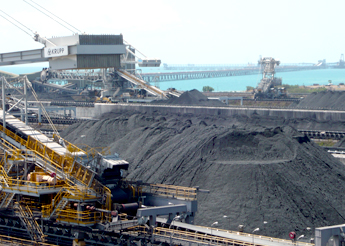
It is a poor time to be writing about coal terminals. Coal prices are down and investments in new terminals are constrained. However, we
should not forget that despite all the negatives coal is the fuel that will generate the electricity of much of the future. So, the
efficiency and effectiveness of the coal chain remain important topics in the port sector.
In Indonesia the efficiency and effectiveness of the coal chain at present means two different forms of coal chain. The big producers who
can achieve scale and something close to world market price for their coal. The others, small producers who feed cash more directly
back into the producing areas and who use more rudimentary export methods fail to achieve the scale required to market a consistent
quality of product. In failing to achieve consistency they also lop 15 to 20% off the price at which they can sell that coal. This
is a loss to them and a loss to Indonesia.
So, it is simple: build big multiuser coal terminals that can be used by the smaller producers. That requires quite a lot of capital that
the small producers cannot raise and do not want to spend. If you are small getting your tonnage to market at the minimum cost matters
more than achieving the best rate per tonne you can. Time for Government action? Certainly would seem to be!
Has the Directorate General of Sea Transport the imagination and skills to take up this baton and run for the line for Indonesia; the signs
are it may have the desire at least with talk of 10 coal terminals. More realistically if they can get one or two up and running they
will have learnt a lot about port development and provided a boost to the coal sector in Indonesia and in particular to the small producers.
A tail end thought could be access requirements; several of the larger coal producing companies have coal terminals that are somewhat underutilised
that could provide capacity far more cheaply than building a new terminal. The potential for those to be encouraged or even forced
to provide capacity to smaller producers to export does exist. In theory at least that should be profitable business for those terminals.
What is required to enable it is the release of some public port license to an existing terminal and promoting the idea of access (as
a prelude to forcing open these terminals if things do no improve).
|
|
|
|
|
|
|
|
|
|
|